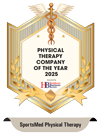Starting out in yoga can be intimidating, especially if your current impression of exercising involves intense cardio or lifting heavy weights. However, you’ll learn in due time that yoga is more than just stretching and holding poses. Consistent yoga practice can improve mindfulness, reduce stress, increase flexibility, AND it can be an awesome workout.
Here are 4 steps to kick-start your yoga practice journey:
1. Start out with beginner poses
Before choosing just one school of yoga to try, get yourself adjusted to the basic poses in yoga that are taught most commonly among the different schools. These poses include the “lotus position” or the “crow pose position” and they are great introductory poses that you could try while mastering your breathing techniques. It is important for you to realize that even the most basic movement may be challenging due to lack of mobility. Take your time with it and don’t give up if you can’t don’t in the first class The key here is practice, and it takes about 10-20 classes to start to understand what yoga practice is all about!
2. Master the most basic breathing techniques
In yoga, breath is just as important as the poses. A simple technique is “breath retention” where you aim to control your breathing. Start by expanding the abdomen when you inhale before carefully contracting the abdomen when you exhale. Aim for somewhere between 2 seconds of inhalation and 3 seconds of exhalation. After you have mastered that, increase to 4-5 seconds and continue to improve!
3. End with Savasana or a Relaxation pose
Once you’ve completed your yoga poses, you should end your practice with a relaxation pose called the Savasana. This involves lying down, face up and relaxing your mind as you physically and consciously relax your muscles and bones. Keep your knuckles face down and let your breath return to its normal rhythm. The Savasana is essentially the “cooling down” technique in yoga and aims to relax the body after an intense session of stretching.
4. Make daily yoga practice a habit
Don’t give up your practice of yoga even, if you find the poses challenging. Beginners don’t always see the benefits of yoga immediately because they give up far too quickly. If you feel that perhaps you need something more physical, you could always incorporate yoga on your rest days instead of making it solely your main exercise routine. Subsequently, as you progress in the exercise, continue challenging yourself with more difficult poses to reap the additional benefits of yoga. Remember, choose a school of yoga that will fit into your lifestyle and you will realize just how effortless and beneficial yoga can be to you.





